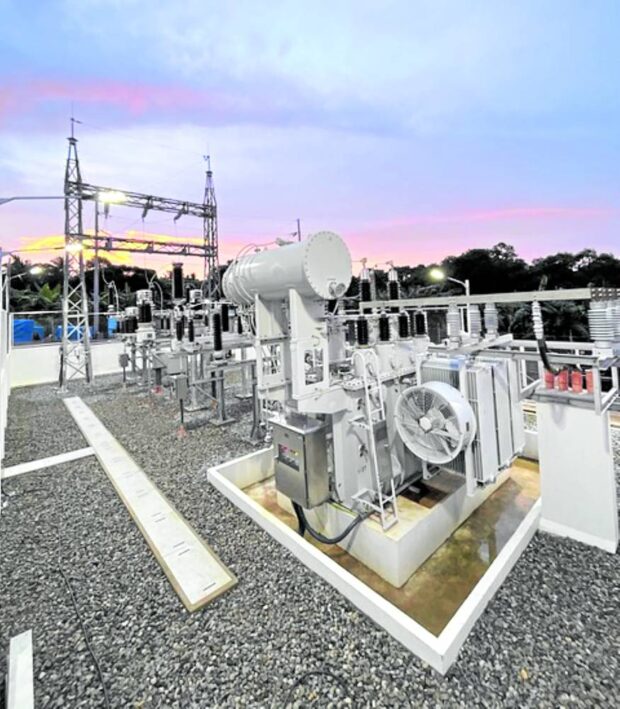‘Smart’ solutions key to PH energy transition

GREEN TECH A suite of air-insulated products (including circuit breakers, disconnectors, current transformers, and voltage transformers) and power transformer supplied by CHINT supplied for PAVI Green Solar Farm in the Philippines. —CONTRIBUTED PHOTO
As both power consumers and distributors in the Philippines grapple with high electricity prices while racing to build renewable energy infrastructure, energy stakeholders are finding it vital to switch to so-called smart energy solutions.
Smart energy utilizes data and analytics to improve the efficiency, reliability and sustainability of energy systems, allowing consumers and businesses to digitalize their power systems.
For one, distributor Manila Electric Co. (Meralco) has been rolling out smart meters within its franchise area to modernize its network and improve operational efficiency.
But shifting to smart energy systems is not as easy as it sounds, especially for developing countries such as the Philippines, which has among the highest electricity rates in Southeast Asia.
The national government itself is putting pressure on grid operator National Grid Corp. of the Philippines (NGCP) to modernize the country’s transmission network, with the Department of Energy emphasizing its importance in ensuring its viability to withstand high levels of variable renewable energy.
China-based international smart energy solutions provider CHINT Global highlights that among the main issues of the Philippines’ power grid is its vulnerability to outages, making energy transition more challenging.
“As the country continues to progress economically, we need to constantly build, improve and upgrade the electrical infrastructure,” Karla Bernal, CHINT Philippines manager for business strategy, sales and marketing, tells the Inquirer.
When it entered the Philippine market over 15 years ago, CHINT saw an opportunity to bring its decades of smart energy solutions and innovations to a nation struggling to balance its transmission network’s ability to absorb more sources of power with growing electricity demand.
It had collaborated with NGCP to modernize substations in the country’s three main island groups to address this problem.

Karla Bernal —CONTRIBUTED
Investing in R&D
As an energy solutions provider, CHINT heavily invests in research and development to ensure that its smart energy products—including smart meters and circuit breakers for solar power plants—are tailored to meet the needs of its customers in over 140 countries.
CHINT has spent $505.78 million in research and development in the last three years alone “to drive scientific and tech innovation.”
Now faced with the challenge of helping accelerate renewable energy development in the country, CHINT underscores the importance of gradually integrating smart solutions into energy systems.
The first step, according to Bernal, is reducing downtime, or any interruption to the delivery of power to consumers. This can happen due to a number of reasons, including equipment failure and grid overload.
“Energy systems are critical infrastructure, and any downtime can have a significant impact on businesses and consumers. With preventive maintenance and repair, renewable and smart energy equipment can last for many years, reducing the possibilities of downtime,” she says.
For example, Bernal points out that smart meters, digital microgrids and virtual power plants can provide more sustainable and reliable energy infrastructure, as these can predict possible outages and service disruptions by analyzing data fed into the digital system.
Out to disrupt
CHINT recently partnered with the Institute of Integrated Electrical Engineers in Southern Luzon to discuss such technology as part of its efforts to educate stakeholders on smart energy solutions.
For renewable energy development, the company supplies “critical electrical equipment”, such as solar panels and circuit breakers, to solar power developers.
Apart from infrastructure, CHINT also offers consultancy services to its clients to help them prevent “buying more than they need.”
“Smart energy, when implemented, would mean that they have to be tailor-made for the needs of each industry, project specification and project timeline,” Bernal shares.
Ultimately, Bernal says the Philippines can move forward with its energy transition plans much faster through smart energy solutions, especially as renewables gradually take center stage.
“The transition to renewable energy sources has certainly been an uphill task for us … As technology in renewables continues to advance, we see opportunities to disrupt the local market and accelerate the country’s move in the energy transition journey,” she adds.
